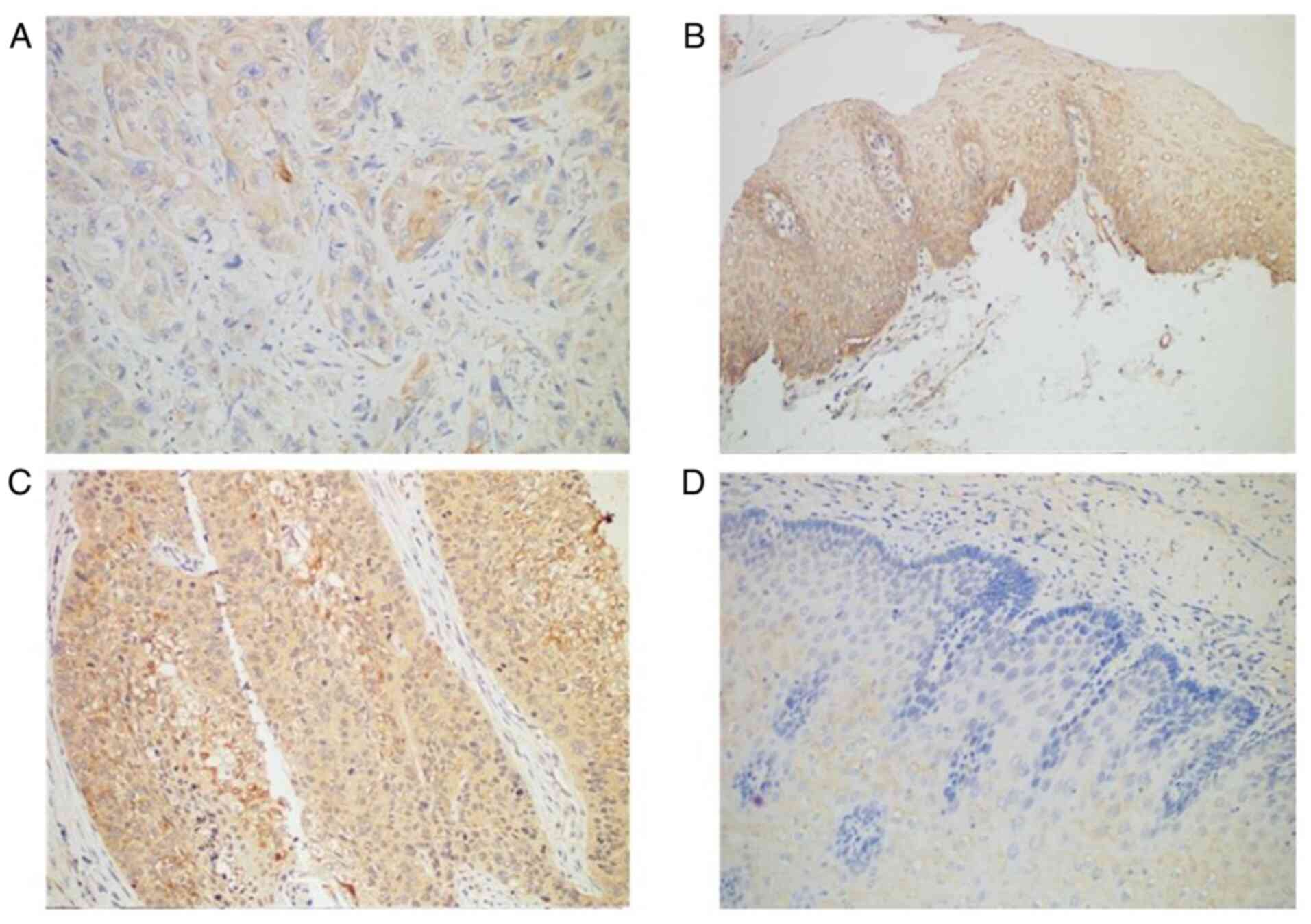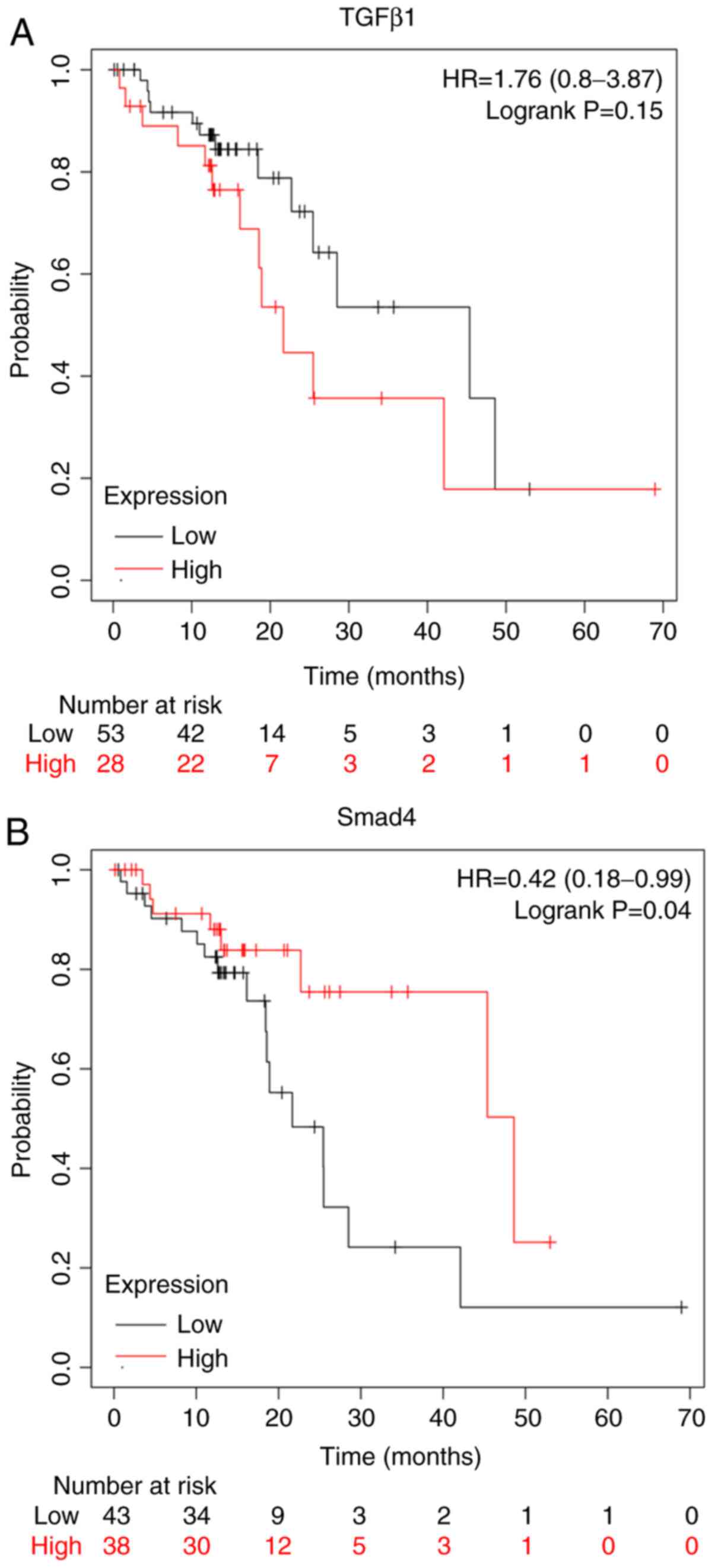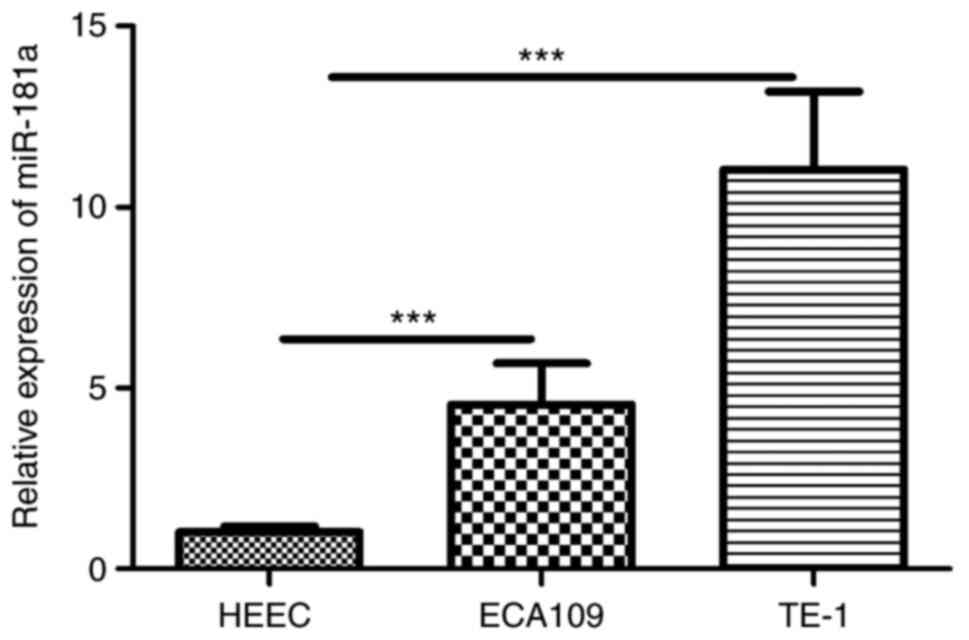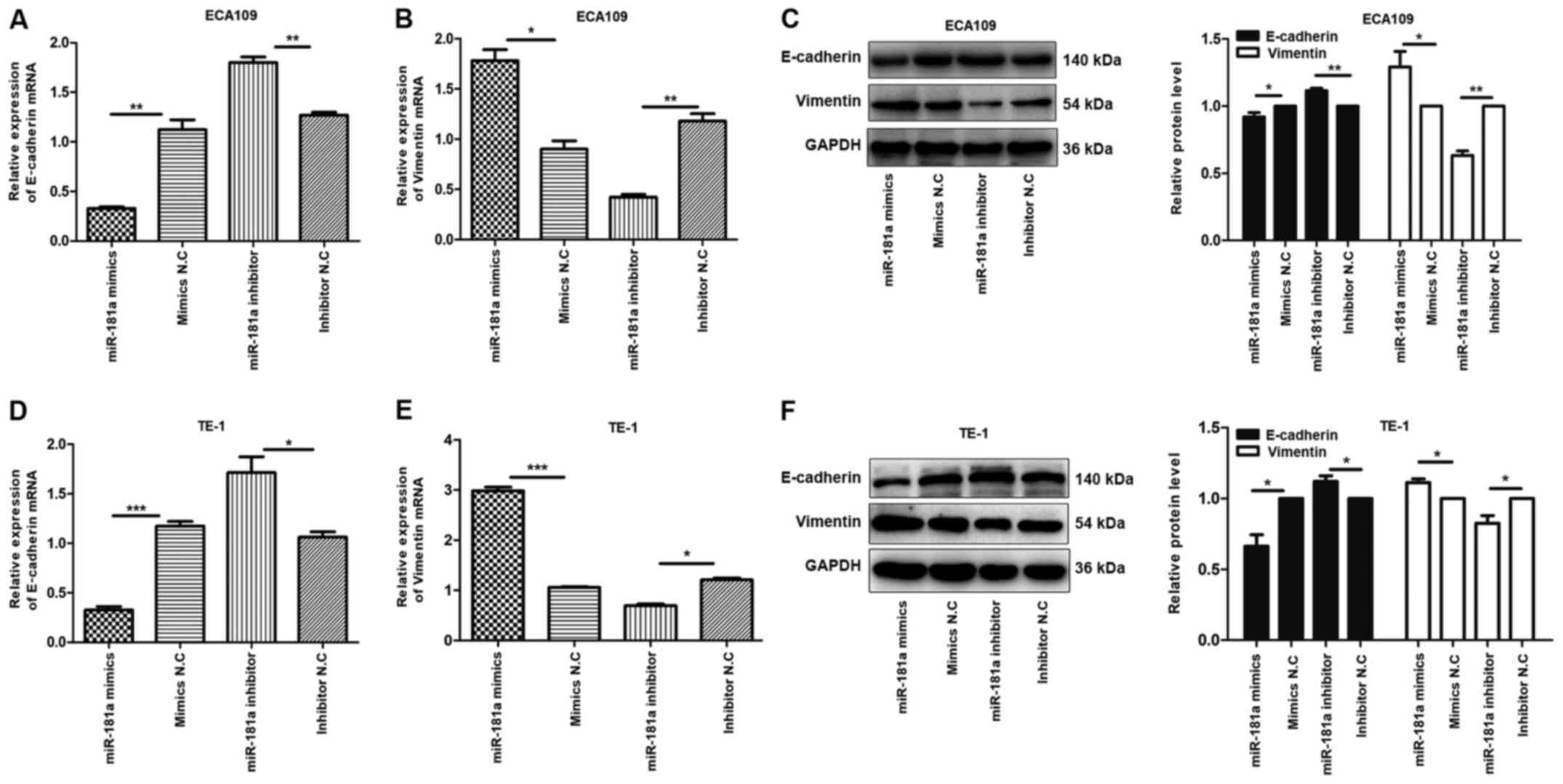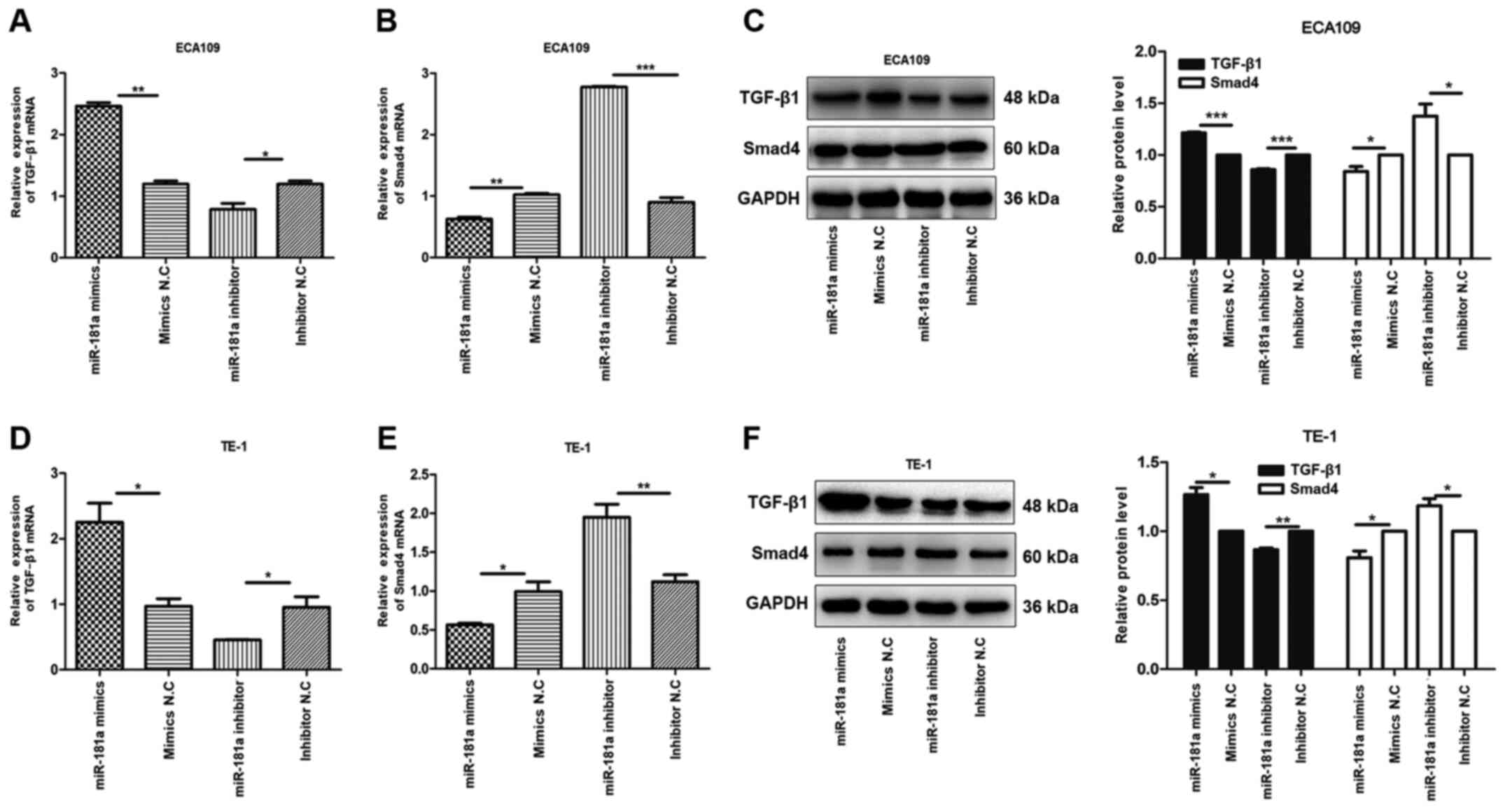|
1
|
Chen W, Zheng R, Zuo T, Zeng H, Zhang S
and He J: National cancer incidence and mortality in China, 2012.
Chin J Cancer Res. 28:1–11. 2016. View Article : Google Scholar : PubMed/NCBI
|
|
2
|
Chen W, Zheng R, Baade PD, Zhang S, Zeng
H, Bray F, Jemal A, Yu XQ and He J: Cancer statistics in China,
2015. CA Cancer J Clin. 66:115–132. 2016. View Article : Google Scholar : PubMed/NCBI
|
|
3
|
Cui Y, Zhang L, Wang W, Ma S, Liu H, Zang
X, Zhang Y and Guan F: Downregulation of nicotinamide
N-methyltransferase inhibits migration and epithelial-mesenchymal
transition of esophageal squamous cell carcinoma via Wnt/β-catenin
pathway. Mol Cell Biochem. 460:93–103. 2019. View Article : Google Scholar : PubMed/NCBI
|
|
4
|
Zeng H, Zheng R, Zhang S, Zuo T, Xia C,
Zou X and Chen W: Esophageal cancer statistics in China, 2011:
Estimates based on 177 cancer registries. Thorac Cancer. 7:232–237.
2016. View Article : Google Scholar : PubMed/NCBI
|
|
5
|
Haslehurst AM, Koti M, Dharsee M, Nuin P,
Evans K, Geraci J, Childs T, Chen J, Li J, Weberpals J, et al: EMT
transcription factors snail and slug directly contribute to
cisplatin resistance in ovarian cancer. BMC Cancer. 12:912012.
View Article : Google Scholar : PubMed/NCBI
|
|
6
|
Feng H, Liu Q, Zhang N, Zheng L, Sang M,
Feng J, Zhang J, Wu X and Shan B: Leptin promotes metastasis by
inducing an epithelial-mesenchymal transition in A549 lung cancer
cells. Oncol Res. 21:165–171. 2013. View Article : Google Scholar : PubMed/NCBI
|
|
7
|
Inui M, Martello G and Piccolo S: MicroRNA
control of signal transduction. Nat Rev Mol Cell Biol. 11:252–263.
2010. View
Article : Google Scholar : PubMed/NCBI
|
|
8
|
Li YH, Li YS, Zhang RJ, Zhou XM and He XR:
Expression of miR-181a-5p, miR-320a and TGF-β1 in esophageal
squamous cell carcinoma. J Cancer Control Treat. 32:395–401.
2019.
|
|
9
|
Shukla SK, Khatoon J, Prasad KN, Rai RP,
Singh AK, Kumar S, Ghoshal UC and Krishnani N: Transforming growth
factor beta 1 (TGF-β1) modulates Epstein-Barr virus reactivation in
absence of Helicobacter pylori infection in patients with gastric
cancer. Cytokine. 77:176–179. 2016. View Article : Google Scholar : PubMed/NCBI
|
|
10
|
Sun NF, Xue Y, Dai T and Li X: D. and
Zheng NX: Tripartite motif containing 25 promotes proliferation and
invasion of colorectal cancer cells through TGF-β signaling. Biosci
Rep. Jul 12–2017.(Epub ahead of print). doi: 10.1042/BSR20170805.
View Article : Google Scholar
|
|
11
|
Chang H, Kim N, Park JH, Nam RH, Choi YJ,
Park SM, Choi YJ, Yoon H, Shin CM and Lee DH: Helicobacter
pylori might induce TGF-β1-mediated EMT by means of cagE.
Helicobacter. 20:438–448. 2015. View Article : Google Scholar : PubMed/NCBI
|
|
12
|
Livak KJ and Schmittgen TD: Analysis of
relative gene expression data using real-time quantitative PCR and
the 2(-Delta Delta C(T)) method. Methods. 25:402–408. 2001.
View Article : Google Scholar : PubMed/NCBI
|
|
13
|
Serrano-Gomez SJ, Maziveyi M and Alahari
SK: Regulation of epithelial-mesenchymal transition through
epigenetic and post-translational modifications. Mol Cancer.
15:182016. View Article : Google Scholar : PubMed/NCBI
|
|
14
|
Xu J, Lamouille S and Derynck R:
TGF-beta-induced epithelial to mesenchymal transition. Cell Res.
19:156–172. 2009. View Article : Google Scholar : PubMed/NCBI
|
|
15
|
Zhu D, Yu Y, Qi Y, Wu K, Liu D, Yang Y,
Zhang C and Zhao S: Long non-coding RNA CASC2 enhances the
antitumor activity of cisplatin through suppressing the Akt pathway
by inhibition of miR-181a in esophageal squamous cell carcinoma
cells. Front Oncol. 9:3502019. View Article : Google Scholar : PubMed/NCBI
|
|
16
|
Yang L, Pang Y and Moses HL: TGF-beta and
immune cells: An important regulatory axis in the tumor
microenvironment and progression. Trends Immunol. 31:220–227. 2010.
View Article : Google Scholar : PubMed/NCBI
|
|
17
|
Morikawa M, Derynck R and Miyazono K:
TGF-β and the TGF-β family: Context-dependent roles in cell and
tissue physiology. Cold Spring Harb Perspect Biol. 8:82016.
View Article : Google Scholar
|
|
18
|
Kang H, Ma D, Zhang J, Zhao J and Yang M:
MicroRNA-18a induces epithelial-mesenchymal transition like cancer
stem cell phenotype via regulating RKIP pathway in pancreatic
cancer. Ann Transl Med. 8:4332020. View Article : Google Scholar : PubMed/NCBI
|
|
19
|
Mi Y, Zhang D, Jiang W, Weng J, Zhou C,
Huang K, Tang H, Yu Y, Liu X, Cui W, et al: miR-181a-5p promotes
the progression of gastric cancer via RASSF6-mediated MAPK
signalling activation. Cancer Lett. 389:11–22. 2017. View Article : Google Scholar : PubMed/NCBI
|
|
20
|
Zhiping C, Shijun T, Linhui W, Yapei W,
Lianxi Q and Qiang D: MiR-181a promotes epithelial to mesenchymal
transition of prostate cancer cells by targeting TGIF2. Eur Rev Med
Pharmacol Sci. 21:4835–4843. 2017.PubMed/NCBI
|
|
21
|
Li L, Xu QH, Dong YH, Li GX, Yang L, Wang
LW and Li HY: MiR-181a upregulation is associated with
epithelial-to-mesenchymal transition (EMT) and multidrug resistance
(MDR) of ovarian cancer cells. Eur Rev Med Pharmacol Sci.
20:2004–2010. 2016.PubMed/NCBI
|
|
22
|
Li H, Zhang P, Sun X, Sun Y, Shi C, Liu H
and Liu X: MicroRNA-181a regulates epithelial-mesenchymal
transition by targeting PTEN in drug-resistant lung adenocarcinoma
cells. Int J Oncol. 47:1379–1392. 2015. View Article : Google Scholar : PubMed/NCBI
|
|
23
|
Wang JJ and Yu JP: miR-181a down-regulates
MAP2K1 to enhance adriamycin sensitivity in leukemia HL-60 cells.
Eur Rev Med Pharmacol Sci. 23:2497–2504. 2019.PubMed/NCBI
|















